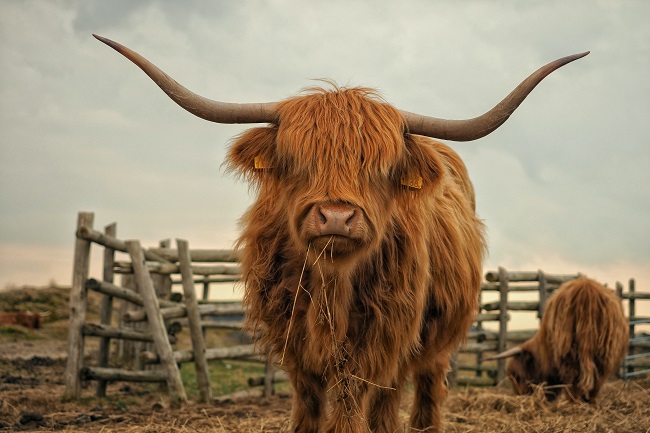
Scottish Highland cattle are a breed of cattle that originated in the Scottish Highlands and Islands. They are one of the oldest and purest breeds of cattle in the world, with a history dating back over 1,000 years.
Highland cattle were bred for their ability to survive in the harsh climate and rugged terrain of the Scottish Highlands. They have long, shaggy hair that protects them from the cold, wet weather, and their sturdy, muscular bodies allow them to navigate the rocky terrain with ease.
Highland cattle were also valued for their meat and milk, which sustained the local population for centuries. In the early 19th century, Highland cattle were exported to other parts of the world, including the United States and Canada, where they were used to improve the quality of local cattle breeds.
During the 20th century, Highland cattle numbers declined, and the breed was at risk of extinction. However, in the 1970s, there was a renewed interest in Highland cattle, and efforts were made to conserve the breed. Today, Highland cattle can be found in many parts of the world, and they are valued for their hardiness, adaptability, and distinctive appearance.
In addition to their practical uses, Highland cattle have also become popular as a decorative breed, and they are often kept on farms and estates for their ornamental value. They are known for their gentle temperament and are often used in petting zoos and as therapy animals.
Scottish Highland cattle are generally hardy and low maintenance, but there are a few special care needs to consider:
Shelter
Highland cattle are well-adapted to cold, wet weather, but they still need a dry shelter to protect them from the worst of the elements. A simple three-sided shed is usually sufficient.
Nutrition
Highland cattle are excellent foragers and can survive on poor-quality pasture, but they still need a balanced diet that includes enough protein, minerals, and vitamins. During the winter months, when pasture is scarce, hay or silage may need to be supplemented.
Hoof Care
Highland cattle have large, curved hooves that can grow too long and cause discomfort or injury. Regular hoof trimming is necessary to prevent these problems.
Hair Care
Highland cattle’s long, shaggy hair can become matted and dirty if not groomed regularly. Brushing and washing the hair can help to keep it clean and healthy.
Horn Care
Highland cattle’s long horns can become damaged or infected if not properly cared for. It’s important to check the horns regularly and trim them if necessary.
8 Fun Facts About Scottish Highland Cattle
Highland cattle are sometimes called “hairy coos” due to their shaggy coats, which are made up of two layers of hair.
The long hair on the Highland cattle’s coat helps to insulate them against the cold and wet weather of the Scottish Highlands.
Highland cattle come in a range of colors, including black, red, dun, and brindle.
Highland cattle are one of the oldest breeds of cattle in the world, with a history dating back over 1,000 years.
The meat from Highland cattle is leaner than that of other breeds, and is highly prized for its rich, beefy flavor.
Highland cattle are excellent foragers and can thrive on poor-quality pasture.
The long horns on Highland cattle are used for defense and foraging and can grow up to 3 feet in length.
Highland cattle are highly adaptable and can be found in many different environments, from the mountains of Scotland to the plains of North America.
Related Articles & Free Email Newsletter Sign Up
3 Major Causes of Calving Emergencies in Beef Cattle
Angus Cattle are Prized for their Versatility and High-Quality Meat




Comment here